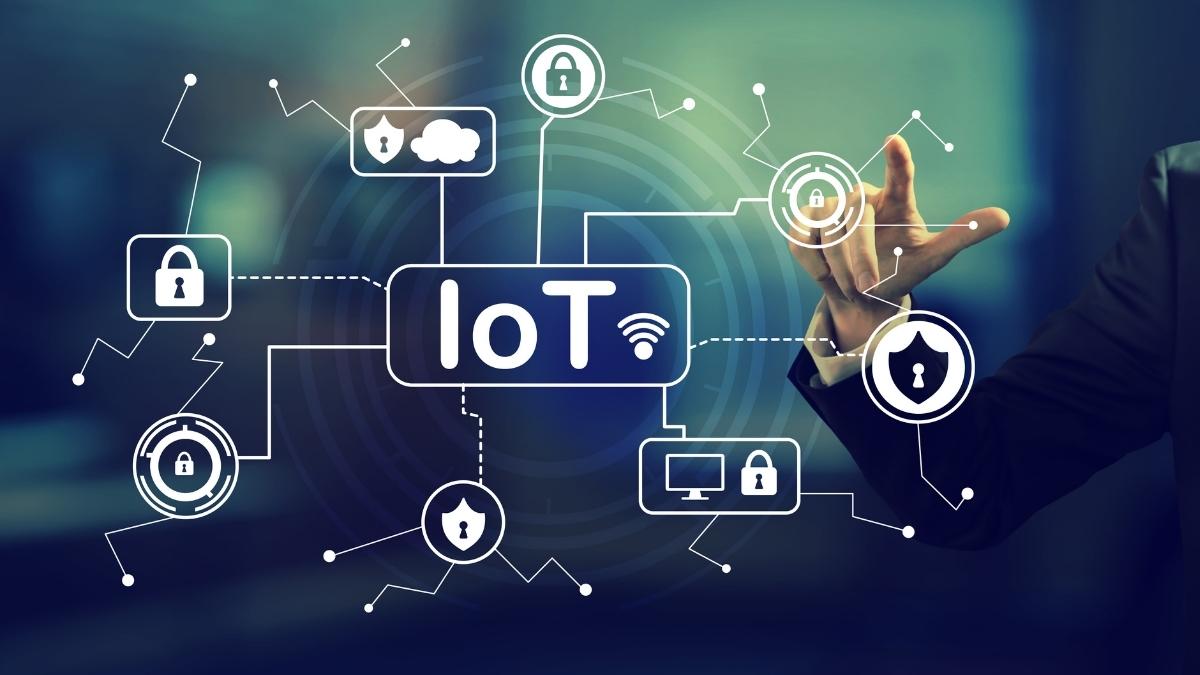
IoT security is the area of technology devoted to defending internet of things networks and linked devices (IoT). IoT entails giving a network of connected computers, mechanical and digital machinery, items, animals, and/or humans internet access. A special identification number and the capacity to autonomously transfer data over a network are given to each “thing.” If devices are not adequately safeguarded, allowing them to connect to the internet exposes them to a range of major dangers.
IoT security is essential, as evidenced by a number of high-profile events were an ordinary IoT device was leveraged to breach and attack a larger network. It is essential to ensure the security of networks with linked IoT devices. IoT security, which aims to reduce the growing IoT vulnerabilities of contemporary enterprises, encompasses a wide range of methodologies, tactics, protocols, and actions.
What is IoT security?
As the world becomes more and more connected, the need for strong security measures becomes more and more important. The internet of things, or IoT, is a network of physical devices, vehicles, home appliances, and other items that are embedded with electronics, software, sensors, and connectivity enabling these objects to collect and exchange data. With the rapid growth of IoT devices comes the challenge of securing them against threats.
IoT security is the practice of securing connected devices and networks from unauthorized access and malicious activity. It includes both hardware and software security measures to protect against attacks. Common IoT security threats include device hijacking, data breaches, denial of service attacks, and malware infections.
To properly secure an IoT system, businesses need to consider all aspects of their network including endpoints, data storage, communication protocols, authentication methods, and network architecture.
IoT security issues and challenges
Threat actors can intercept devices in more ways the more ways they can connect to one another. IoT devices rely on a variety of protocols that hackers can intercept, including HTTP (Hypertext Transfer Protocol) and API.
Also not exclusively included under the IoT umbrella are internet-connected gadgets. Bluetooth-enabled appliances are considered IoT devices as well and need IoT security. Such oversights are a factor in the current increase in IoT-related data breaches.
Here are a few IoT security issues that continue to jeopardize people’s and businesses’ financial security.
1. Remote exposure
A new IoT security issue has been identified that could allow attackers to remotely gain access to devices. The problem, dubbed “remote exposure,” affects devices that use the UPnP protocol and have not properly configured their security settings. This could allow an attacker to gain control of the device and access sensitive information.
UPnP is a protocol that allows devices to discover and communicate with each other on a network. It is commonly used in home networking devices such as routers and printers. However, UPnP has been found to have several security vulnerabilities that can be exploited by attackers.
One of the biggest problems with UPnP is that it uses simple HTTP requests for communication, which are not encrypted or authenticated. This means that an attacker could send malicious requests to a device and gain control of it.
2. Lack of industry foresight
As the world progresses, technology does too. And with this ever-growing digital age comes a new set of challenges for security. One such challenge is the lack of industry foresight when it comes to IoT security.
The Internet of Things, or IoT, refers to the interconnectedness of physical devices and devices with the internet. This means that everything from your fridge to your car can be connected to the internet and controlled remotely. While this is extremely convenient, it also poses a serious security risk.
IoT devices are often left unsecured, leaving them vulnerable to attack. Hackers can gain access to these devices and use them to collect sensitive data or even take control of them entirely. This poses a serious threat not only to individuals but also to businesses and even entire infrastructure systems.
3. Resource constraints
As the world becomes increasingly connected, the need for security measures must be taken into account to protect against potential threats. The Internet of Things (IoT) is a network of physical objects that are embedded with sensors, software, and other technologies to collect and exchange data. While the IoT has the potential to transform lives and industries, it also creates new security risks.
One of the biggest security issues with the IoT is resource constraints. Due to the vast number of devices that are connected to the internet, it can be difficult to keep track of them all and ensure that they are secure. This is especially true for devices that are not regularly used or updated, as they may be more vulnerable to attack.
Another issue is that many IoT devices are not equipped with adequate security features.
How to protect IoT systems and devices
These IoT security solutions can help businesses strengthen their data protection protocols.
1. Introduce IoT security during the design phase
- The best time to protect IoT systems and devices is during the design phase. By incorporating security into the design, manufacturers can create a more secure product that is less likely to be hacked.
- There are a few things to consider when designing for security. First, consider what data the device will be collecting and transmitting. This data should be encrypted to prevent eavesdropping. Second, think about how the device will be authenticated. This will help prevent unauthorized access.
- By incorporating these security measures into the design of IoT devices, manufacturers can create a more secure product that is less likely to be hacked. This will help protect users’ data and privacy, as well as the integrity of the IoT system as a whole.
2. PKI and digital certificates
As the internet of things (IoT) proliferates, so do the opportunities for bad actors to exploit vulnerabilities in devices and systems. One way to protect IoT systems and devices is with a public key infrastructure (PKI) and digital certificates.
A PKI is a set of software, hardware, people, policies, and procedures needed to create, manage, distribute, use, store, and revoke digital certificates. A digital certificate is an electronic document that uses a digital signature to bind together a public key with an identity—information such as the name of a person or an organization, their address, and so on.
There are many benefits to using PKI and digital certificates in IoT systems:
- They provide authentication of devices and data.
- They help ensure the confidentiality of communications between devices.
3. Network security
As the world moves increasingly towards interconnectedness, network security becomes more and more important. With the rise of the internet of things (IoT), there are more opportunities than ever for hackers to gain access to sensitive information or even take control of devices. Here are some tips to protect your IoT systems and devices:
- Keep your software up to date. This may seem like a no-brainer, but it’s important to make sure that all your software, including your operating system, is up to date. Hackers are constantly finding new ways to exploit vulnerabilities, so it’s important to patch any holes as soon as possible.
- Use strong passwords and two-factor authentication. Another basic, but important, security measure is using strong passwords and enabling two-factor authentication wherever possible.
4. API security
As the number of IoT devices increases, so does the need for API security. APIs are the backbone of IoT systems, allowing devices to communicate with each other and with external applications. However, they also present a potential security risk. Hackers can exploit vulnerabilities in APIs to gain access to sensitive data or control of devices.
To protect IoT systems and devices, organizations need to take steps to secure their APIs. This includes implementing authentication and authorization measures, as well as encrypting data in transit. Additionally, developers should monitor API usage for suspicious activity and continuously test API security controls. By taking these precautions, organizations can ensure that their IoT systems are safe from attack.
Which industries are most vulnerable to IoT security threats?
The internet of things is gradually becoming a part of our everyday lives, with interconnected devices becoming more and more commonplace. However, as these devices become more ubiquitous, they also become more vulnerable to security threats. Here are some of the industries that are most at risk from IoT security threats.
The healthcare industry is one that is particularly vulnerable to IoT security threats. Medical devices that are connected to the internet can be hacked and used to gain access to sensitive patient data. This can have serious implications for patient privacy and safety.
Another industry that is at risk from IoT security threats is the automotive industry. Connected cars are increasingly being targeted by hackers who can gain control of them remotely. This can lead to dangerous situations on the road, as well as putting drivers’ personal data at risk.
Notable IoT security breaches and IoT hacks
The internet of things is connecting more and more devices to the internet, but not all of these devices are secure. Here are some notable IoT security breaches and hacks:
In 2016, a massive IoT botnet called Mirai took down major websites like Twitter, Netflix, and Reddit. The botnet was made up of thousands of unsecured IoT devices, like security cameras and routers.
In 2017, a ransomware attack hit several hospitals in the UK. The attack used an IoT device to gain access to the hospital network and then spread the ransomware throughout the system.
In 2018, a data breach at a U.S. casino was traced back to an unsecure IoT fish tank. The hackers were able to use the fish tank’s Wi-Fi connection to get into the casino’s network and steal customer data.




